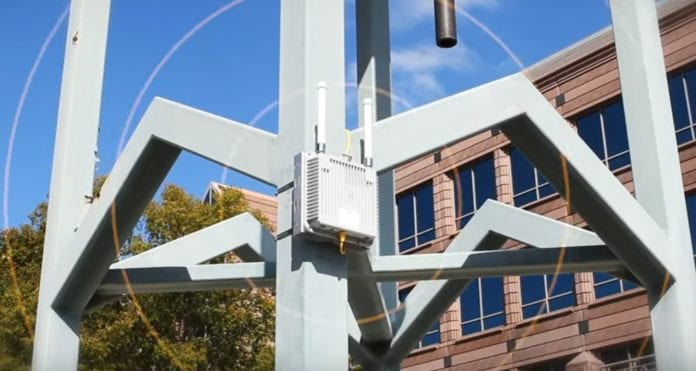New Wireless Infrastructure Association report details the key role street lights, utility poles and traffic signals in helping speed small cell initiatives.
Increasingly dense networks better support end-user data demand, particularly in high-traffic areas. To provide this type of pinpoint capacity and coverage, operators often use small cells, although large-scale small cell deployments have not kept pace with projections largely due to challenges related to site location. Essentially, to deploy small cells in an affordable, scalable way operators need a one-size-fits all process. But, due to the required concurrency with municipal officials in any jurisdiction targeted for a small cell, the process is inherently not repeatable.
Many successful small cell deployments involve strong coordination and cooperation with municipal leaders, as well as ready access to pole facilities, including traffic signals, street lights and utility poles. The Wireless Infrastructure Association’s Innovation and Technology Council explores the importance of pole facilities to small cell deployments in a recently published report titled “Small Cells on Pole Facilities: A Primer on How Utility Poles, Street Lights and Traffic Signals Will Help Drive Next-Generation Mobile Broadband Networks.”
In the context of the rapid advancement of mobile services, WIA CEO and President Jonathan Adelstein said: “Installing wireless infrastructure at the precise location where it is needed improves the network and immediately benefits a community. A combination of existing infrastructure and in some cases new poles is needed to build out these next-generation mobile networks. Reliable wireless coverage promotes economic development, and is crucial for communities that want to attract and maintain a vibrant business environment and a competitive workforce.
“The responsible deployment of wireless infrastructure including attaching smaller wireless equipment to pole facilities requires close collaboration with local municipalities and utility companies. Local jurisdictions should be encouraged to make their infrastructure available for collocation so that multiple deployments can co-exist on one pole.”
The report authors note that installing wireless infrastructure on an existing pole site generally begins in a municipality’s public works department, which may require an “encroachment permit,” a traffic control permit and/or a building permit related to the electrical work. This process can be further delayed in the event public notices and/or hearings are in play.
These processes should be streamlined, the report authors wrote, in support of “the same common goal: seamless and ubiquitous wireless coverage and capacity for the community’s constituents. Detailed steps and parameters need to be articulated and agreed upon by the stakeholders to advance the stated common goal.”
Researchers from Deloitte, in the newly released “Flashpoint small cells” report, also touch on the permitting and governmental coordination aspect of a small cell deployment.
“Network design teams need to be equipped with the right tools and information for identifying small cell site locations that have the highest chance of success when it comes to the permitting process, taking into consideration the location of existing fiber and the physical application of the small cell itself,” the report notes. “Know that your team will need information on intergovernmental relationships and infrastructure usage restrictions, specifications on existing street furniture within jurisdictions, and information on available backhaul options and power options in every part of the network, not just the ‘wireless’ network.”

